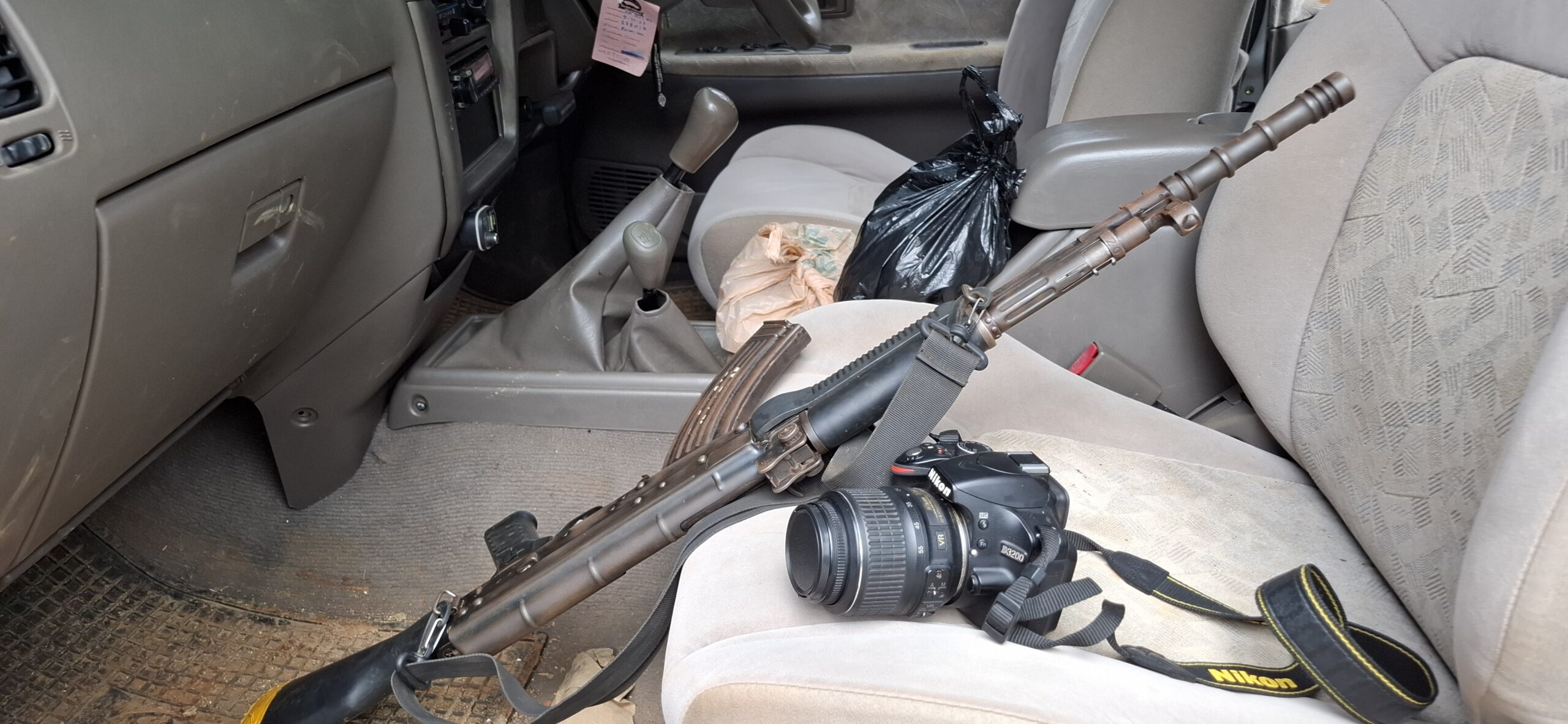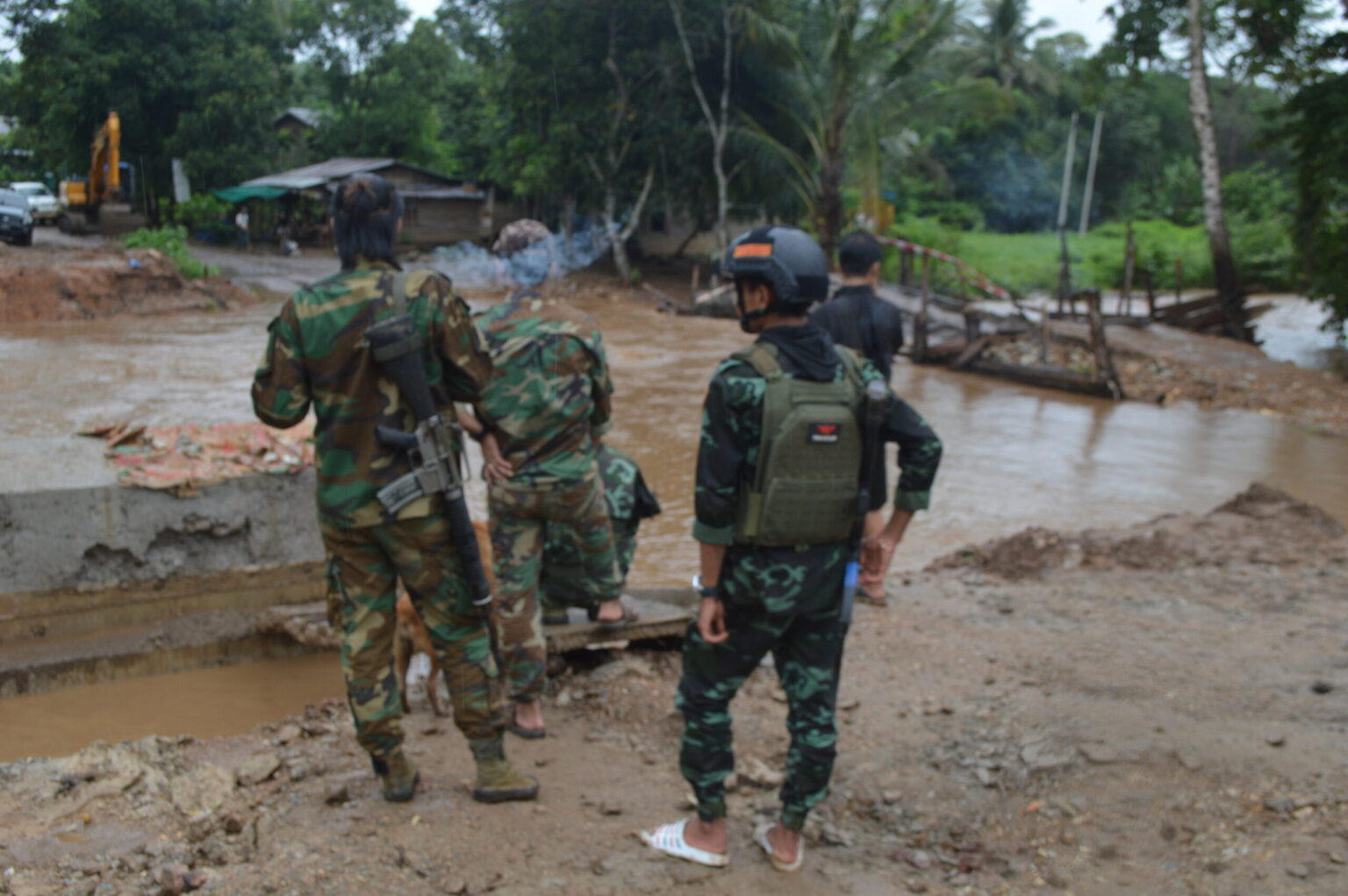During rainy season, the world’s oldest conflict generally takes a bit of a break. The rains swell rivers and turn jungle paths into deep mud where vehicles can sink up to their doors. Travel becomes extremely difficult and slow, and in some cases, impossible. Resistance soldiers said they would normally schedule training during the rainy months. However, as the Burmese government has increased its use of high-quality drones from China and Russia, along with aircraft, the shelling, bombing, and airstrikes continue each time there is a break in the weather.
Consequently, the resistance is currently all-hands-on-deck, with most soldiers at the front, as the government makes an unprecedented push to retake the 70–80% of the country it lost over the past three years, when the resistance began gaining ground. The junta, which seized control of the country in a coup in 2021, is planning to hold an election next year, which international observers have already dismissed as a stunt to gain credibility. By capturing more territory, they can claim that the election results represent the will of a larger percentage of the population. This is an ironic strategy, given that people currently being bombed by junta forces are unlikely to vote for the junta’s candidates. Consequently, it is more or less a foregone conclusion that the election results have been predetermined.

Heading down the swampy roads, we drive as far as possible, switching vehicles several times and loading motorbikes and other equipment onto boats at multiple points. A trip that normally takes five hours during the dry season now takes three days. The entire county has no phone service and no internet, so when you are traveling, you have no communications. Simple tasks, such as notifying the next truck that you will be late for the rendezvous or sending word across the river to alert the boat driver, become extremely problematic. At least once, we had to sleep out overnight because there was no way to get a message across the river.
The entire country is filled with men and boys in military uniforms, driving muddy trucks to and from battle as the resistance struggles to keep their home communities and ethnic states safe. Although the resistance controls most of the country’s landmass, there are millions of displaced people. At this point, resistance soldiers are fighting to keep their families alive in displaced persons camps, which continue to be targeted by junta forces.
Direct from battle, the soldiers rendezvous at a tea shop, though most have no money to buy anything. Most of the country’s population is unemployed. Resistance soldiers receive no salary, and since many of their parents are displaced, there is no support coming from home. Schools have been closed or inaccessible due to government bombing for the past four years, leaving many of these young men and women unable to finish high school, let alone pursue college. For some, their families still live in government-controlled areas, making it impossible to visit them or return home until the war is over. For the resistance, victory is the only path to resuming any semblance of a normal life, and for many, the only way to reunite with their loved ones.
Burma’s (Myanmar) decades-long war stems from military rule, ethnic tensions, and struggles for autonomy since independence in 1948. Following the February 2021 coup that ousted Aung San Suu Kyi’s elected government, mass protests gave way to armed resistance, with People’s Defense Forces joining long-standing ethnic armed organizations under the National Unity Government. Resistance forces now control 70–80% of the country, using guerrilla tactics and drones against the junta’s China- and Russia-supplied military. Operation 1027, launched in 2023 by the Three Brotherhood Alliance, seized key positions in northern Shan State, pressuring the regime despite its airpower advantage.
This year, fighting has intensified ahead of the national elections. The resistance is short on bullets and drone jammers, while the junta buys as much as it wants and receives weapons by air. The resistance depends on donations, purchasing small quantities of arms and smuggling them into the country, with shipments frequently seized by authorities. Civilian casualties continue to mount as the Burma Army indiscriminately targets schools, churches, temples, and hospitals. In all of Karenni State, only two hospitals remain functional, and all but three Catholic parishes have been destroyed by government bombs. Eighty percent of the state’s population is displaced, many living under green tarps, and still being bombed by the junta.
With Russia and China blocking U.N. action, and Western nations unwilling to intervene militarily, the conflict continues to escalate into a major humanitarian crisis.
Read the full article here


